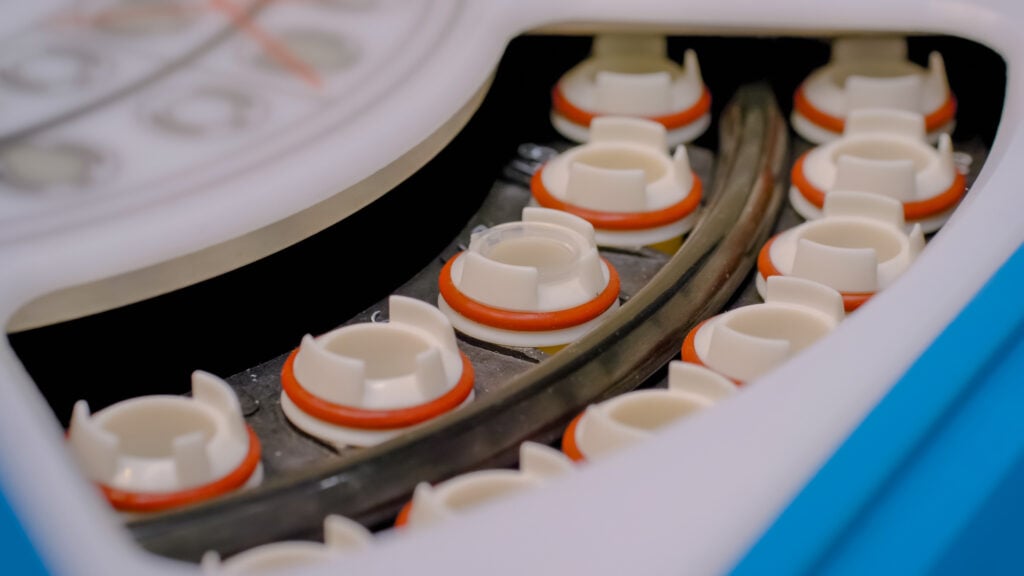Statement addressing TEA analyses
Techno-economic models are fundamental tools for exploring and prioritizing areas that warrant further research.

TEAs provide a research roadmap

Techno-economic analyses are valuable tools for prioritizing areas that warrant further research, and we eagerly welcome diverse perspectives that highlight critical knowledge gaps, risks, and technological barriers to ensure that the cultivated meat field has the most clear-eyed understanding possible of the challenges ahead. This is critical for well-informed resource allocation and project prioritization, and differing viewpoints are indicative of a healthy scientific ecosystem that draws from a wide array of professional backgrounds and scientific disciplines. But extrapolating these early models into a definitive stance on long-term scientific or economic viability will cause missed opportunities to invest in truly paradigm-shifting technologies. While there is still technological uncertainty associated with scaling cultivated meat production, we feel that increasing resource allocation toward research efforts to resolve these uncertainties is the appropriate response. GFI isn’t alone in this viewpoint. A variety of academic and nonprofit voices have weighed in with similar sentiments. 1
While there is still technological uncertainty associated with scaling cultivated meat production, we feel that increasing resource allocation toward research efforts to resolve these uncertainties is the appropriate response.
A broad set of scientific stakeholders are focused on cultivated meat
GFI has no vested interest in any particular alternative protein technology. We support innovations that have the greatest potential for impact, and we’re strongly motivated to not divert precious resources toward endeavors that seem clearly incapable of success — we’d like to be the first to know if cultivated meat were incontrovertibly a futile exercise! In fact, some members of our Science & Technology team entered the alt protein field as skeptics about the ultimate economic or technical viability of cultivated meat. Had that stance continued to hold as we dug deeper, we would have happily advocated for resource allocation exclusively into plant-based and fermentation-derived alternatives. But the more we have dug in, with an open-minded approach and enough humility to not presume that our starting assumptions are indefinitely true, the more optimistic we have become.
This observation also holds true for many of the highly respected scientists in this field. As GFI’s lead scientist Elliot Swartz noted in his Twitter thread on this topic, scientists who have founded or led the research efforts of cultivated meat companies have typically either stayed in their role or left to found their own cultivated meat companies or consult for the industry. We see few or no examples of accomplished scientists leaving the field altogether to return to their prior lucrative roles in cell therapy or biopharma, which they could easily do. Esteemed professors including Mark Post, Uma Valeti, Shulamit Levenberg, Yaakov Nahmias, Steve Oh, Marcelle Machluf, and Hanry Yu all founded cultivated meat companies at great reputational risk, when they could have otherwise continued enjoying marked success in the equally hot fields of tissue engineering and cell therapy. Again, these are the scientists with the world’s deepest understanding of the technical challenges facing cultivated meat production and the current state of the technology, as well as the best insights on the likelihood of success of specific approaches to address these challenges.
Likewise, global life science companies like Merck KGaA, large-scale cell culture manufacturing experts like Esco Aster, and multinational suppliers of raw material inputs for the process (including Nutreco, Griffith Foods, DSM, and Mitsubishi Corporation) have made major strategic business decisions to orient themselves toward opportunities in the cultivated meat field. These companies deeply understand the ins and outs of large-scale cell culture and the procurement of massively scaled inputs, and they have seen “under the hood” at cultivated meat companies to a sufficient degree to justify significant business decisions and potential reputational risk among their existing clients.
And this points to a critical observation underlying the assumptions that factor into different techno-economic analyses: the Humbird analysis, relying only on publicly available data, necessarily draws insights from the existing literature on parallel fields such as biopharma and cell therapy. The CE Delft analysis, on the other hand, is the only publicly available techno-economic analysis we are aware of that uses actual data submitted by companies producing cultivated meat and its inputs, shared under NDA directly with the CE Delft team (not shared with GFI). Furthermore, all of the techno-economic analyses published to date only reflect challenges of pursuing scale-up of cultivated meat in fed-batch and perfusion-based stirred-tank reactor systems, which by themselves represent some of the methods that cultivated meat manufacturers are currently pursuing but do not necessarily represent the full range of scale-up (e.g., here) or biomass-generating methodologies that may be applicable to future cultivated meat production (e.g., here and here).
Cultivated meat presents new challenges that require new solutions

Modeling a process on public data from parallel but distinct cell culture processes that are also necessarily out of date (biopharma companies are typically not publishing their most recent innovations on process or cell line improvements, preferring to retain them as intellectual property) will lead to a muddled understanding of the state of the art, which can be particularly misleading in such a rapidly-progressing field.
As just one example relevant to the all-important questions of density and sterility, batch processes achieving only about 3×106 cells/ml and requiring intensive sterilization between every batch used to be the norm in the biopharma field only a decade ago, but process intensification via innovations in bioreactor design, media formulation, and a shift toward continuous perfusion processes is now enabling densities 10- to 100-fold greater and with sufficient contamination control measures to allow for production runs that last weeks or months rather than days. These advances are only starting to be rolled out commercially in the last few years, and they are still mostly kept close to the vest within biopharma companies rather than being widely shared in scientific publications because of the enormous competitive advantage they confer.
We are hopeful that more of the experts who have seen actual data from cultivated meat companies — representatives of the companies themselves or of their supplier companies, contract manufacturers, strategic partners, or investors — will contribute to this discourse in the coming days. These voices were notably absent from the piece in The Counter, which relied on speculations about the cultivated meat industry from those on the outside based on their understanding of other cell culture processes. This outsider perspective leads to conclusions that fail to account for the extent to which cultivated meat is a fundamentally different undertaking, with a unique set of business incentives, technical considerations, and risk tolerances.
Challenging assumptions
Many historical assumptions about animal cell culture have already been successfully challenged by cultivated meat companies or by the commercial animal cell culture efforts in biopharma that preceded this field. Acknowledging areas where novel solutions may arise is not the same as naïve or wishful thinking. There are some areas where true constraints, dictated by the laws of physics or thermodynamics, forbid workarounds. But for many of the core challenges facing the cultivated meat field, the search for alternate solutions is still in its infancy — we have far from exhausted the creativity of researchers in this field. As the Humbird analysis acknowledges, all prior research efforts in animal cell culture operated in the absence of the incentives that would have been expected to solve challenges the cultivated meat field is facing today. “…[C]onventional animal cell-culture processes are carried out on a vastly smaller scale than food production. In addition, they have not necessarily been optimized for the same economic levers as industrial fermentation, e.g., yield of cell mass or even media cost. Instead, they have individually been optimized for something else which is process- and product-specific. The scale-up laws and economics of animal cell mass production thus remain uncertain.”
One key paradigm shift between cultivated meat and nearly all prior applications of animal cell culture technology is that here, the cells themselves are the product, rather than using the cells as manufacturing factories for some other high-value product. This distinction plays out in myriad ways when it comes to process design, cell selection, and media optimization, all of which factor heavily into the overall techno-economics. The Counter article and the underlying Humbird analysis reference data from CHO (Chinese Hamster Ovary) cells as a benchmark for understanding the limits of cell line optimization: because CHO cells have been thoroughly characterized and optimized for over 60 years, the argument is made that further optimization will produce only incremental improvements in production efficiency. However, this assumption only makes sense if the metrics and incentives governing the cultivated meat industry are the same as those for which CHO production has been optimized in the past, and if intrinsic traits within the wide range of species and cell types being trialed for cultivated meat production do not significantly differ from one single cell line.
In the biopharmaceutical and vaccine industries, cell biomass is essentially a waste product. Cell line characteristics and culture methods have been optimized to increase the intended secreted product while minimizing cell biomass, since any metabolism directed toward cell biomass production is considered undesirable. For production of cultivated meat, the goal is to increase biomass while reducing the production of secreted proteins and metabolites. Optimization of cell lines for this purpose will therefore have opposite goals compared to all commercial animal cell processes in the past. While this limitation is briefly acknowledged in the original Humbird analysis, the remainder of the paper and The Counter article continue to draw comparisons to existing cell culture processes and facilities.
One option is to assume that animal cell culture is not feasible for large-volume, low-cost applications simply because it has historically not been used as such, but retrospectives tend to serve as poor barometers of the prospects for future innovation. A more forward-looking interpretation is that there is a tremendous amount of low-hanging fruit for relatively low-effort, high-impact process improvements guided by the new incentives and considerations under which the cultivated meat field operates.
Suitable industry parallels are critical for the proper contextualization and interpretation of these findings. In fact, one could argue that the cell culture industry until now has actually been pushed toward higher costs than are necessary even at the current scale at which it operates, simply because of the “arbitrarily high margin[s]” it can capture. If one batch of a drug or vaccine can fetch $5M, biopharmaceutical manufacturers won’t scoff at a $1.5M bioreactor with all the bells and whistles even if a $0.5M reactor would suffice, as long as the bioreactor seller can convince the biopharmaceutical client that the extra bells and whistles might prevent even a single batch failure over the course of the entire lifetime of the reactor. The bioreactor company is incentivized to over-engineer their equipment as much as possible to capture that extra $1M in revenue, knowing that the risk calculus of the biopharmaceutical manufacturer will bear that cost. The same point could be made about the price of media inputs, clean room facilities, or any other aspect of the process or infrastructure. Thus, it is very important to acknowledge that current prices reflect the realities of the current business model, market incentives, and risk tolerances more than they reflect true manufacturing or technology costs.
On the opposite end of the cost/volume spectrum, relying too heavily on a microbial fermentation or cleantech perspective can contribute to inappropriate comparisons with historical failure-to-scale cautionary tales from other industries, namely synthetic biology for fuels and chemicals and single-cell protein for animal feed. Feed, fuel, and industrial chemicals are almost entirely commoditized, rendering market viability wholly dependent upon the ability of new market entrants to compete on cost alone with massively scaled, market-dominant incumbents because there is little to no appetite for premium pricing. Food, on the other hand, allows for market differentiation among brands with many-fold (or, in some cases, orders-of-magnitude) variance in pricing on the basis of specialized attributes — more akin to industries like fashion, consumer electronics, and cosmetics, than industries like feed, fuel, and commodity chemicals. Even at small volumes and high price points, many cultivated meat companies will be able to find a scaling foothold that simply doesn’t exist within commodity fuels and chemicals.
These types of industry comparisons are often used to justify the conclusion that if the initial techno-economic models don’t appear able to meet commodity pricing, the whole endeavor will be waylaid. This is exceedingly unlikely for cultivated meat. A better comparative industry would be the plant-based meat industry, which is theoretically also competing with mostly-commoditized, massively-scaled incumbents but has proven capable of commanding several-fold higher price points (and often at much higher margins than the incumbents — for example, Beyond Meat’s gross margin is 39% to Tyson’s 12%) because of its ability to differentiate itself and drive consumer demand on the basis of attributes other than cost. Impossible Foods and Beyond Meat both conducted years of intensive R&D before the launch of their first flagship burgers, which have been met with enthusiastic consumer demand despite commanding higher price points. Many plant-based meat brands — including Beyond Meat, Impossible Foods, and Gardein — have seen demand outpace their manufacturing capacity despite still not having reached price parity with conventional meat, a decade or more after their founding.
Plant-based meat is a relevant parallel for another reason: it is becoming increasingly clear that the future alternative protein industry will consist largely of hybrid products that transcend the boundaries between production pillars. Early data suggests that consumers perceive a compelling sensory advantage over purely plant-based products by incorporating a minor fraction of animal cells combined with other plant materials, rather than requiring a product that consists entirely of animal cells (Savir, 2017). If this holds true, then the cultivated meat industry could gain a foothold for economically viable market entry by providing animal cells to alternative protein manufacturers to create, for instance, hybrid products with a fraction of the product weight made up of cultivated animal skeletal muscle fat (Ben-Arye, 2020). Hybrid products could offset the high production costs of animal cell cultivation with more affordable plant materials while competing on other important consumer metrics such as taste and sustainability. Techno-economic analyses built on assumptions that cultivated meat will be manufactured in stirred-tank bioreactors, as is currently being pursued but may not be the only feasible method, should view hybrid products as the most plausible path to commercialization and assess costs accordingly.
While there are a number of other, more technical reservations our scientists have regarding various assumptions within the Humbird analysis, these larger issues regarding the framing and drawing of conclusions are the most salient for a productive discussion on the best path forward. In general, techno-economic analyses and the critical perspectives of scientific voices well versed in other fields add great value to the cultivated meat industry by highlighting several key areas for further empirical and modeling research to validate assumptions and improve upon the limitations identified. This is the spirit in which techno-economic analyses should be considered at this stage of development of the cultivated meat industry: not as final assessments of economic viability but as guides to focus subsequent research efforts.
It is important to remember that research to address key technical challenges from the unique perspective of the cultivated meat industry’s needs has really only begun in earnest in the last few years. Six years ago, there was not a single incorporated company, and the field was largely relegated to a small number of graduate students and a few experienced scientists. Currently, there are more than 80 cultivated meat companies around the world, a product already on the market, and hundreds of scientists now focused on growing meat directly from cells, all of whom have thus far only contributed a few years or months of direct work toward this endeavor by virtue of its early stage.
It is far too early to write off cultivated meat based on early analyses that do not examine the full range of future possibilities. To the contrary: given what is at stake, we cannot afford not to invest significant resources in affording cultivated meat the greatest chance of success.
1. A variety of academic and nonprofit voices have weighed in with similar sentiments: Isha Datar of New Harvest has cautioned against drawing any conclusions based on a sum total of only two techno-economic analyses, each of which come with their own assumptions and limitations; Dr. Jan Dutkiewicz of the Swiss National Science Foundation and Harvard Law noted “the whole point of public funding is that it can support long-term research that risks failing without the pressure for generating investor hype or relying on VC”; and Dr. Matthew Hayek of NYU agreed that the presence of many unknowns is “precisely the reason to invest public $ in early research.” Even some researchers who take a sharply critical stance on the lofty public promises of the cultivated meat field, such as Dr. Garret Broad at Fordham University, agree that “the technology is worth exploring and supporting” because “sometimes technological advancement goes very slowly and looks implausible until it quickly accelerates.”

Take a deeper dive
GFI scientists expand on the limitations of single studies for assessing the full range of technological possibilities.
Authors
Liz Specht, Ph.D.
DIRECTOR OF SCIENCE AND TECHNOLOGY
Liz Specht oversees GFI’s Science and Technology department to build a roadmap for accelerating alternative protein research while empowering scientists to execute on this vision.

Elliot Swartz, Ph.D.
LEAD SCIENTIST, CULTIVATED MEAT
Elliot Swartz analyzes scientific progress and bottlenecks in cultivated meat.

Claire Bomkamp, Ph.D.
SENIOR SCIENTIST, CULTIVATED SEAFOOD
Claire Bomkamp is focused on cultivated seafood and driving forward GFI’s Sustainable Seafood Initiative.

Header image courtesy of Upside Foods
